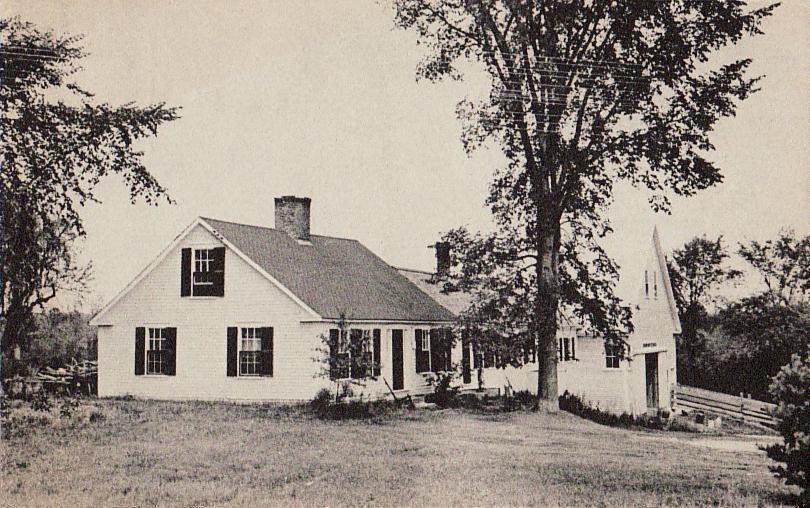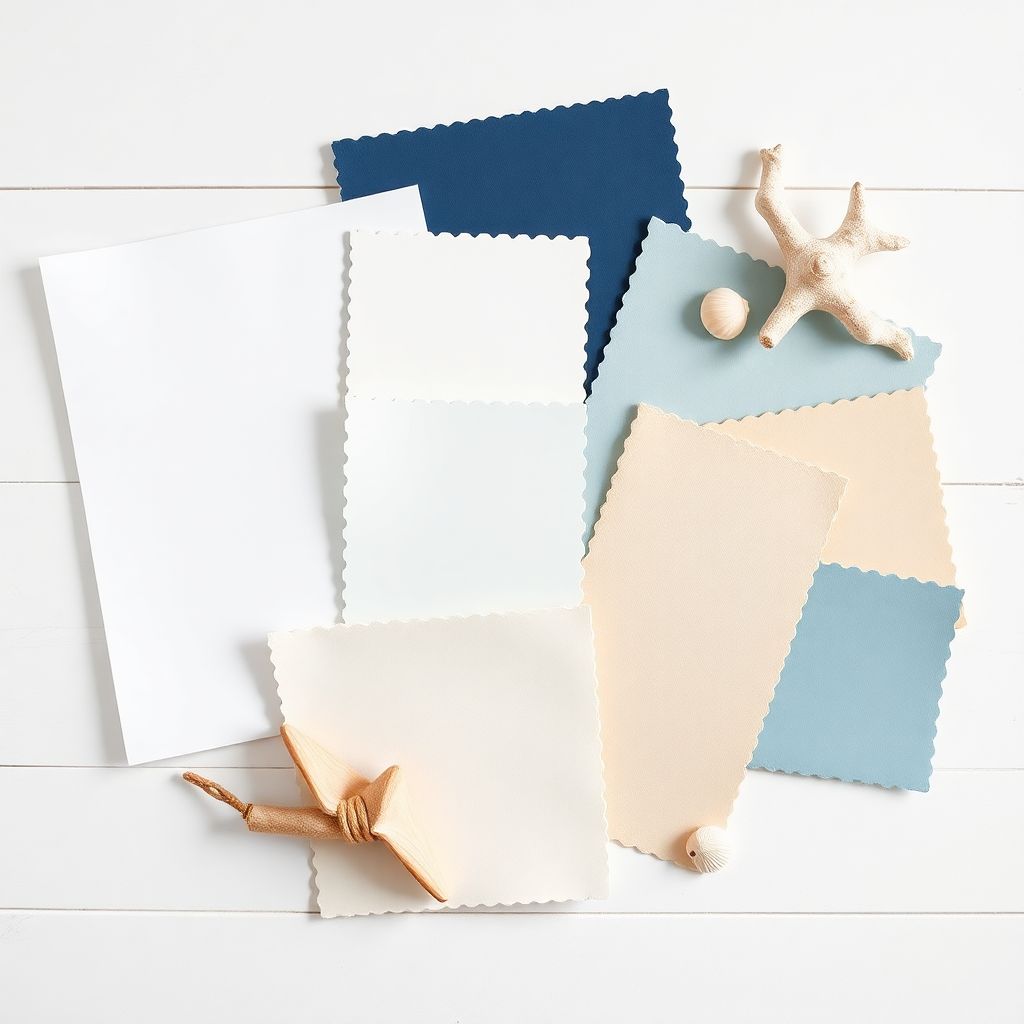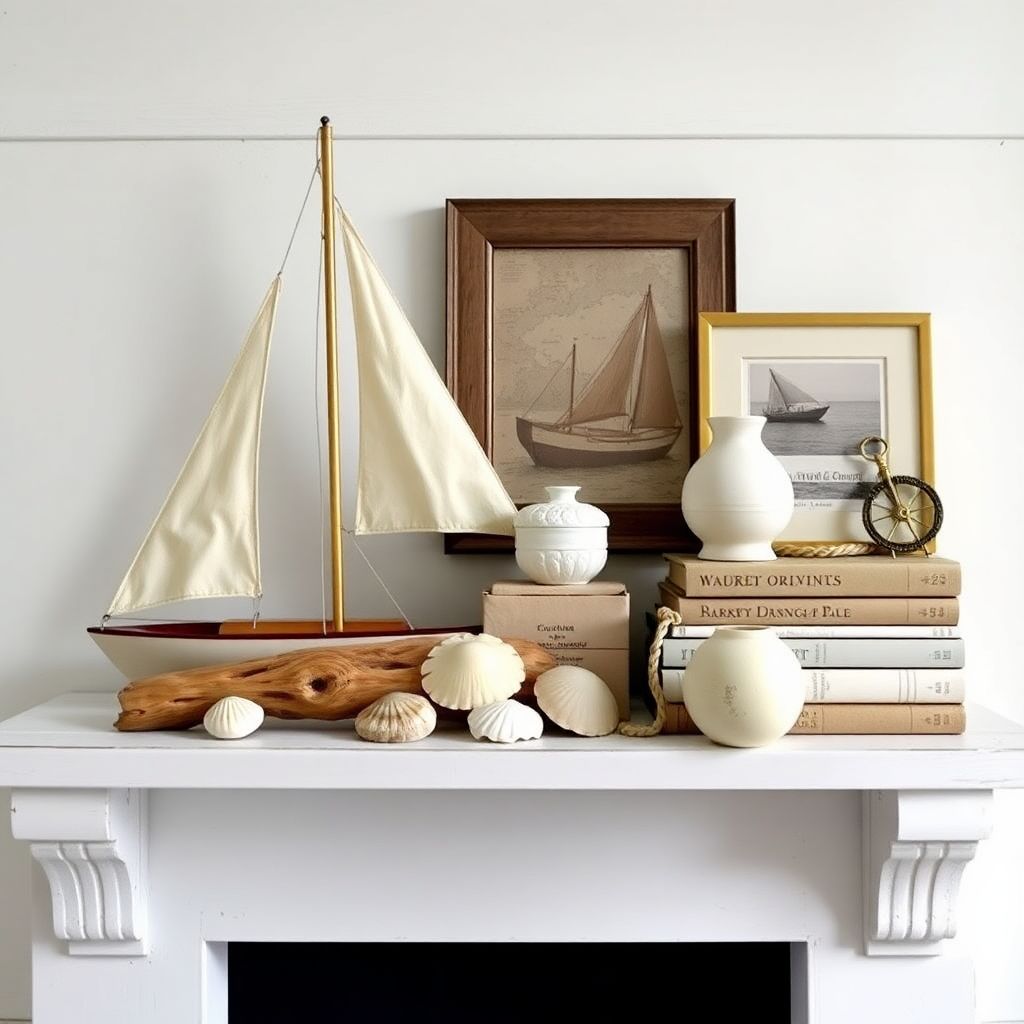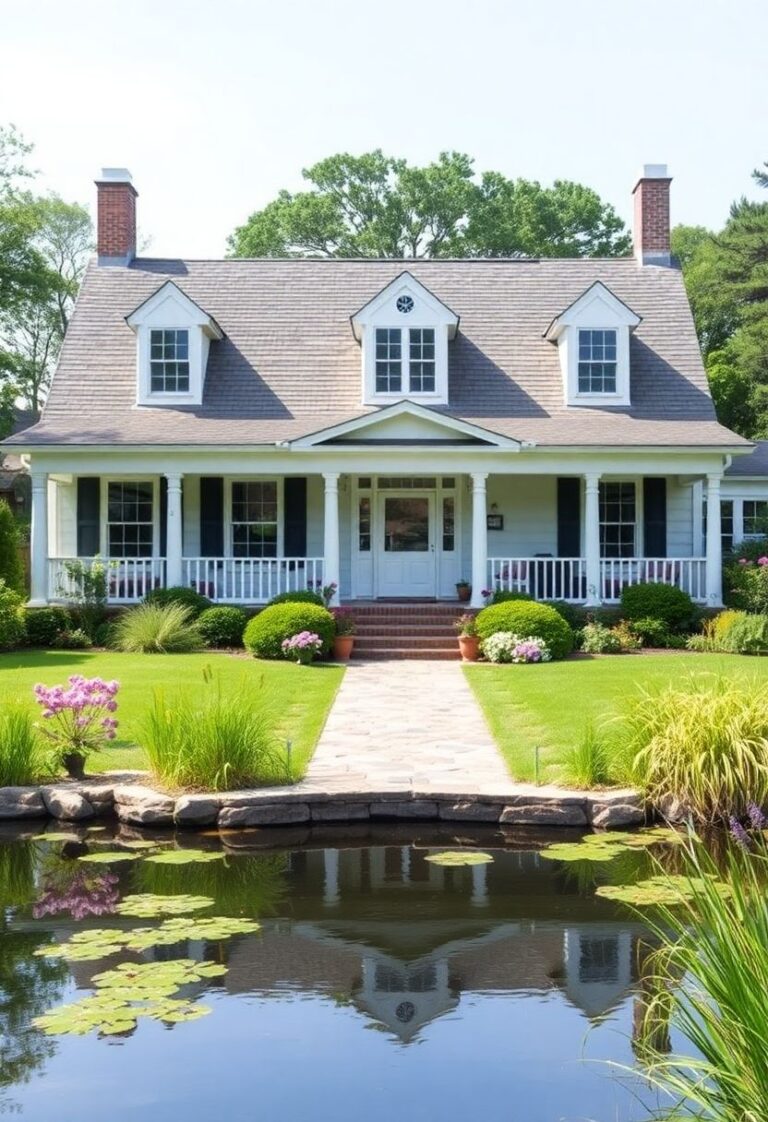Imagine stepping into a home where the salty tang of the ocean air seems to linger, where sunlight dances across white-washed walls, and every corner whispers of relaxed, coastal living. This isn’t just a dream; it’s the inviting embrace of Cape Cod interior design. At its heart, Cape Cod style is a quintessentially American aesthetic, born from the charming, practical cottages that dot the New England coastline. It’s a look that blends unpretentious simplicity with enduring comfort, creating spaces that feel both lived-in and refreshingly bright. Its enduring popularity lies in its ability to create an atmosphere that is instantly welcoming and inherently calming – a timeless retreat from the everyday hustle. In this guide, we’ll dive into the essential elements that define this beloved style, from its signature color palettes and natural materials to the comfortable furnishings and charming details that bring it all to life. Get ready to discover how you can capture the breezy, timeless spirit of Cape Cod in your own home.
The Roots of Cape Cod: A Brief History & Inspiration
The charming simplicity of Cape Cod interior design isn’t accidental; it’s deeply woven into the history and landscape of its namesake region. To truly appreciate its enduring appeal, we need to journey back to 17th-century New England, where English colonists first adapted their traditional building methods to the often harsh realities of the American East Coast.
The original Cape Cod houses, emerging primarily from the late 1600s through the early 1800s, were born out of necessity. They were modest, one-to-one-and-a-half-story structures, typically built with locally sourced timber. Their design was a masterclass in practicality:
Steeply Pitched Roofs: Designed to shed heavy New England snow and rain effectively.
Large Central Chimneys: A dominant feature, providing heat to multiple rooms and structural support. Often, the entire home was built around this central hearth, the heart of colonial life.
Symmetrical Facades (often): A simple, balanced look with a central door, often flanked by multi-paned windows.
Shingle Siding (Clapboard or Cedar Shakes): Left to weather naturally to a silvery gray or sometimes painted, these materials stood up well to salty air and storms.
Low, Broad Profile: Helped the homes withstand strong coastal winds.These architectural features directly influenced the interiors. The need for warmth meant smaller rooms clustered around the central chimney, and lower ceilings to conserve heat. Wood was abundant, leading to its extensive use for floors, unadorned trim, and often, simple paneling like beadboard, which added a layer of insulation and visual interest.

While the style’s origins are practical and somewhat austere, it saw significant revivals, most notably during the Colonial Revival period of the late 19th and early 20th centuries, and again post-World War II as an affordable and charming option for new families. These revivals romanticized the earlier simplicity, solidifying the “Cape Cod” as an iconic American house style.
Beyond the architecture, the very inspiration for Cape Cod interiors is drawn from:
The Coastal Landscape: The ever-present ocean, sandy dunes, and resilient coastal vegetation inspired the light, airy color palettes and natural textures.
Maritime Life: While not always overtly nautical in its decor, the practicality, resourcefulness, and understated ruggedness of seafaring life subtly inform the style's unfussy nature.
A Desire for Comfort and Function: At its core, Cape Cod design has always been about creating a comfortable, functional, and welcoming shelter – a true haven.Understanding these roots helps us see that Cape Cod style is more than just a collection of design elements; it’s a reflection of a resourceful past, a connection to the natural environment, and a timeless appreciation for simple, unpretentious living.
Key Elements of Cape Cod Interior Design
The enduring charm of Cape Cod interior design lies in its harmonious blend of specific elements that work together to create spaces that are both beautiful and livable. It’s a style defined by its light-filled ambiance, natural materials, and comfortable, unpretentious furnishings. Let’s explore the core components that bring this coastal aesthetic to life:
A. Color Palette: Light, Bright, and Coastal
The Cape Cod color scheme is foundational to its airy and welcoming feel. It draws heavily from the coastal environment:
* Dominant Whites & Creams: Crisp whites, soft off-whites, and warm creams are the stars, used generously on walls, trim, and even furniture. These hues maximize light, creating a sense of openness and cleanliness reminiscent of sun-bleached shells and sails.
* Soothing Blues: From deep navy and classic nautical blue to softer sky blues, robin’s egg, and muted aquas, shades of blue are essential accents. They evoke the sea and sky, bringing a calming, coastal presence.
* Sandy Neutrals: Beige, tan, and soft grays mimic the colors of sand, driftwood, and weathered shingles, providing grounding and warmth to the predominantly white spaces.
* Natural Greens: Subtle touches of sage, seafoam, or muted olive can reflect coastal grasses and foliage.
* Occasional Pops of Color: While the overall palette is serene, restrained pops of cheerful red (think classic buoy red), sunny yellow, or even a soft coral can add personality and visual interest, often seen in textiles or small accessories.

B. Materials & Textures: Natural, Durable, and Honest
Authenticity is key in Cape Cod design, and this is reflected in its choice of materials:
* Wood, Wood, Wood: Wood is paramount. Think light-toned hardwood floors (like oak or maple), sometimes painted white or a soft, weathered gray. Beadboard or wainscoting paneling on walls or ceilings is a hallmark, adding texture and traditional charm. Simple, unadorned wood trim is also common.
* Natural Fibers: Textiles lean heavily on natural, breathable materials. Cotton and linen are go-to choices for upholstery, slipcovers, curtains, and bedding, offering comfort and a relaxed look. Jute, sisal, or seagrass rugs add texture underfoot and reinforce the connection to nature.
* Wicker & Rattan: These woven materials bring a light, airy, and slightly rustic feel through accent chairs, baskets, side tables, or even lighting fixtures.

C. Furniture: Comfortable, Classic, and Unfussy
Cape Cod furniture prioritizes comfort and timeless appeal over ornate detailing:
* Simple, Sturdy Lines: Furniture pieces often feature clean lines and traditional silhouettes. Think Shaker-inspired simplicity, classic Windsor chairs, or ladder-back designs.
* Comfortable Upholstery: Sofas and armchairs are generously proportioned and designed for relaxation, often featuring rolled arms or simple skirted bases. Slipcovers in white or light-neutral cotton or linen are iconic, offering practicality and a relaxed aesthetic.
* Painted Finishes: Painted furniture, especially in white, cream, or soft blues and grays, is very common. This can include dressers, bookcases, side tables, and bed frames, contributing to the light and bright feel.
* Function Over Formality: Pieces are chosen for their usefulness and comfort, avoiding anything too precious or overly formal.

D. Textiles & Patterns: Simple Charm and Coastal Whispers
Patterns are used thoughtfully, adding interest without overwhelming the serene backdrop:
* Classic Stripes: Ticking stripes (often blue and white or red and white) are a staple, as are broader nautical stripes. These can appear on upholstery, cushions, rugs, or window treatments.
* Checks & Gingham: Small-scale gingham or simple check patterns in soft colors add a touch of country charm and homeliness.
* Subtle Florals & Botanicals: If florals are used, they are typically ditsy prints or simple botanical motifs, often in muted tones, rather than bold or overly romantic patterns.
* Textured Solids: For larger pieces like sofas or bedspreads, textured solids (like a nubby linen or a matelassé cotton) often take precedence over busy patterns, allowing the form and comfort of the piece to shine.
E. Decor & Accessories: Nautical & Nostalgic (With a Light Touch)
Accessories are chosen to enhance the coastal, lived-in feel without creating clutter:
* Subtle Nautical Nods: While not overtly thematic, gentle references to maritime life are common. This might include model sailboats, framed nautical charts, antique ship’s lanterns, rope details (like a mirror frame or drawer pulls), or a strategically placed oar. The key is subtlety – avoid turning the space into a seaside souvenir shop.
* Natural Elements: Collections of seashells, smooth beach stones, pieces of driftwood, or pressed botanicals displayed simply add an authentic touch of the coast.
* Vintage & Antique Finds: Weathered picture frames, antique mirrors with slightly foxed glass, old books, collected pottery, or even a vintage American flag can add layers of history and personality.
* Handmade & Artisanal Touches: Items like braided rugs, handmade quilts, simple ceramic vases, or woven baskets contribute to the style’s unpretentious and homey feel.

F. Lighting: Maximizing Brightness and Warmth
Light is crucial in achieving the airy Cape Cod aesthetic:
* Abundant Natural Light: Window treatments are often minimal to maximize natural light – think sheer cotton panels, simple Roman shades, or classic shutters.
* Classic Fixture Styles: Lighting fixtures tend towards traditional and functional designs. This includes simple pendant lights (perhaps with a metal shade), classic table lamps with fabric shades (often white or neutral), wall sconces with a timeless appeal, and occasionally, lantern-style fixtures.
* Layered Lighting: A mix of ambient, task, and accent lighting creates a warm and inviting atmosphere, especially in the evenings.
By understanding and thoughtfully combining these key elements, one can create an interior that truly captures the timeless, comfortable, and light-filled spirit of Cape Cod design.
In essence, Cape Cod interior design is more than just a collection of aesthetic elements; it’s an invitation to embrace a lifestyle of relaxed elegance, coastal serenity, and timeless comfort. Through its signature palette of sun-bleached whites and soothing blues, its reliance on honest, natural materials, and its embrace of comfortable, unfussy furnishings, this beloved style creates spaces that feel both refreshingly airy and deeply grounding. It’s a testament to the idea that true beauty often lies in simplicity and authenticity. Whether you reside by the ocean’s edge or simply dream of its calming presence, incorporating the principles of Cape Cod design can transform your house into a true haven – a welcoming retreat that celebrates simplicity, warmth, and the enduring beauty of coastal living.
Be sure to check out our article with 25 Coastal Cape Cod living room designs if you need more inspiration!
